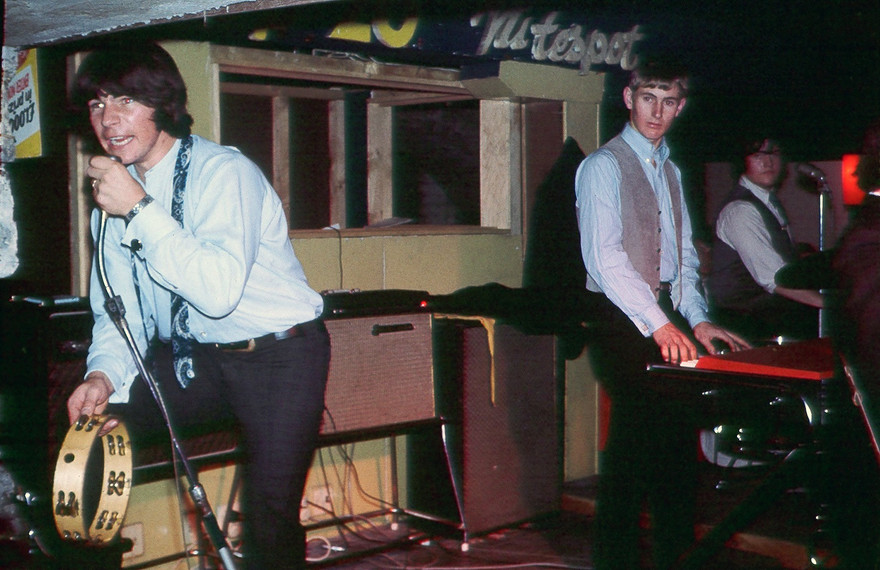
Larry's Rebels at the Top 20. - Kurt Shanks collection
The Bluestone Store – at 9-11 Durham Lane, just off Queen Street, since 1861 – is New Zealand's oldest remaining commercial building. It has had many uses over the last 150 years, but its heyday as a music venue was from the 1960s-70s. It tracked the changing times, going from teen pop fans to illicit drinking rockers to disco fanatics and fully-fledged punks.
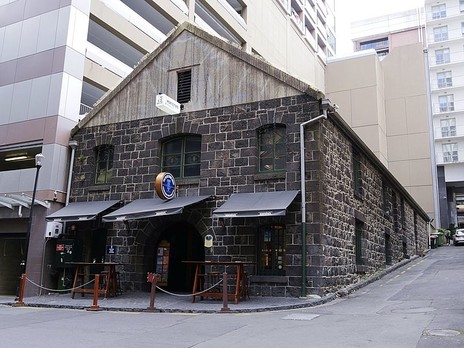
The Bluestone Store at 9-11 Durham Lane in Auckland's CBD. - Wikimedia, CC BY 3.0.
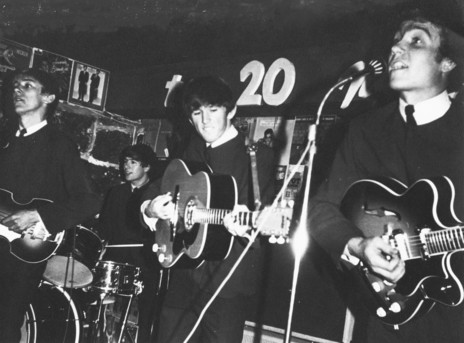
The Pleasers at the Top 20, from left: Kevan Walsh, Max Thomson, Bryan Layton and Roger Skinner.
It was built as a warehouse/store in Auckland’s market district, and it wasn’t until 100 years later that it opened as The Top 20 club/coffee lounge, which specialised in having bands covering songs from the hit parade. Hugh Lynn worked as a comperé at the club, which was a useful step on the way to becoming one of the country’s top promoters:
“I started working down there on Friday, Saturday, Sunday. Stan Blinken and his partner – I can’t remember his name – they used to book the bands. I would work with the bands on their sets and introduce them on stage. It was a great time. There was hardly any trouble that I can remember. Everybody had come with the intention of having a good time and the bands were great.”
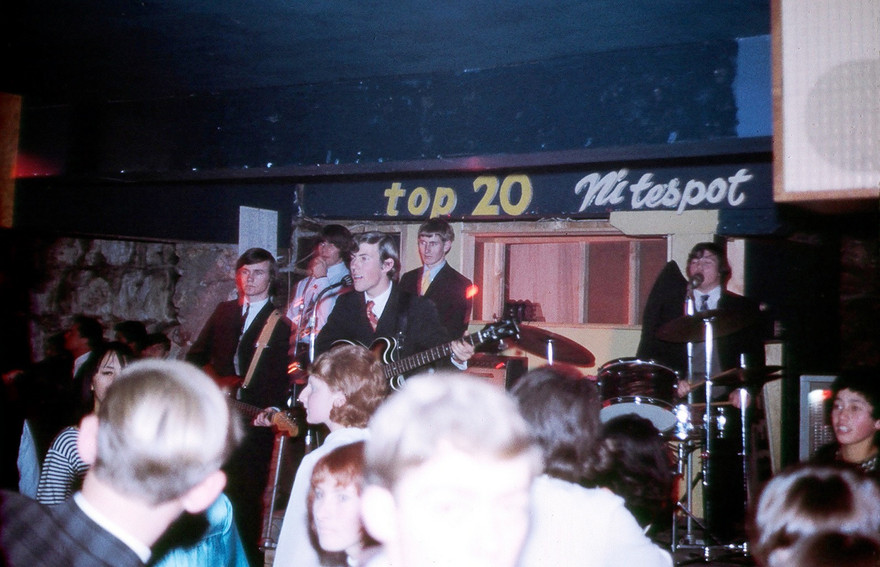
Larry's Rebels at the Top 20 - Kurt Shanks collection
Max Merritt recalled playing there with saxophonist Jimmie Sloggett: “The Top 20 was open five or six nights a week and the weekend hours were killers – 6pm to 2am, with only three minutes off every hour. Sloggett would join us around midnight so the last couple of sets were always hot. Sloggett provided the whiskey and Mikey Leyton, the English singer who worked at the drinks counter, provided the amphetamines. Man, by 2am we were bouncing off the walls!’’

An advert for the Top 20 Club in 1967. The comperé, Hugo, was Hugh Lynn who also ran the security.
Among those to attend the Top 20 was young musician Terry Bradley: “I first went there on a Saturday afternoon as a 14-year-old in 1965. One afternoon, I saw the Premiers, Max Merritt and the Meteors and Dinah Lee, all for 1/9, or thereabouts.”
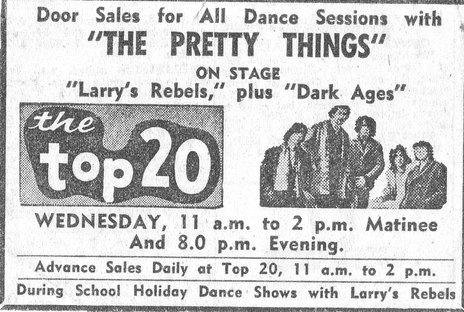
Newspaper advert for The Pretty Things shows at the Top 20, 1965 - Ian Thomson collection
Bradley’s own band, The Zarks, played the venue after it was taken over by Radio Hauraki – renaming it the 1480 Club, after their AM frequency. Bradley recalls that the Sunday afternoon shows had a fantastic line-up of the city’s best bands: “The place was full, and the atmosphere was electric. We played one of our hottest sets ever there (in my humble opinion) with songs by Cream and Jimi Hendrix, both considered ‘underground’ music back then and very rarely heard on the radio.”
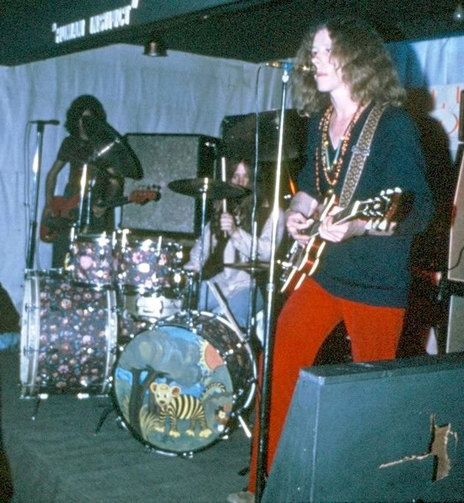
The Underdogs at Club Bo Peep in 1970: Neil Edwards, Glen Absolum, Harvey Mann.
Zarks guitarist Larry Killip continued playing at the club in its next iteration as Club Bo Peep: “Dave Henderson approached my band Omnibus about playing the Bo Peep [on] Monday and Tuesday nights. Never mind the early week gig, we were just rapt to be part of that scene. As it happens some of those gigs were huge, albeit the crowd being mostly men! American soldiers/sailors on R&R from Vietnam and maybe a smattering of the girls from K Rd, the Pink Pussycat, etc.
“We would play until about three in the morning then go home and catch a couple of hours’ sleep then off to our day jobs. Alcohol was usually in the form of rum hip flasks, delivered in secret in a cardboard box by the same chap each night. It must have been common knowledge to the authorities, and I think they did make the odd raid but nothing like later with Granpa’s where they really put Tommy Adderley through the wringer.”

The Human Instinct at Club Bo Beep, Durham Lane, 1970: Larry Waide, Maurice Greer, Billy TK. - Maurice Greer Collection
Tommy Adderley moved his group Headband into the club in 1971 and worked alongside Dave Henderson to run the downstairs area as Granny’s. The alcohol laws had gradually loosened since the law changed in 1968, so that pubs could open to 10pm and sports clubs could sell alcohol to their members. The pair knew they had little chance of getting a licence, so instead they started their own private club upstairs, which would be named “Granpa’s”.

A members card for Grandpa's (upstairs from Granny's) the Tommy Adderley-owned club in Durham Lane West. The members card was one of several (flawed) attempts to allow the venue to serve alcohol in those restrictive times.
It became common for visiting musicians to be taken to Granpa’s to drink and listen to live bands. This included visits from several Rolling Stones, Elton John, John Mayall, Lulu, Deep Purple, Santana, the Moody Blues, the Joe Cocker band, Led Zeppelin, Three Dog Night, Guess Who, Sweet, and ELO.

Granpa's, Auckland: John Mayall jams with Headband drummer Jimmy Hill, 22 March 1972. - Bruce Jarvis, Auckland Libraries Heritage Collections 1704-0825B-07A
However, the police weren’t sympathetic to the club’s attempt to bend the alcohol laws and undertook regular busts. In mid-1976, the fines finally became too high to continue and both Granny’s and Granpa’s were closed.
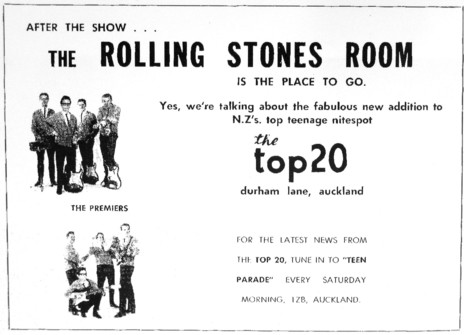
Never one to miss an opportunity, Phil Warren's The Rolling Stones room was at The Top 20 in Durham Lane, Auckland. Nearly 10 years later, Keith Richards, Charlie Watts, Nicky Hopkins and Bobby Keys turned up for a jam when the room was called Granpa's.
The venue was taken over by two Liverpudlians, Don Hooper and “Ricky” (Marty Slade). They opened the downstairs level as Babes Disco, which had the distinction of being a favoured hangout of local gang the King Cobras. The top floor had been stripped of all the bar equipment but in February 1978 they reopened it as punk club Zwines. Simon Grigg was managing rising punk group Suburban Reptiles at the time and provided his collection of NME magazines to be used as wallpaper. The decor was done by Johnny Volume and Ronnie Recent of The Scavengers, who also set up the PA. The walls were equally likely to be “decorated” in hastily scrawled graffiti.
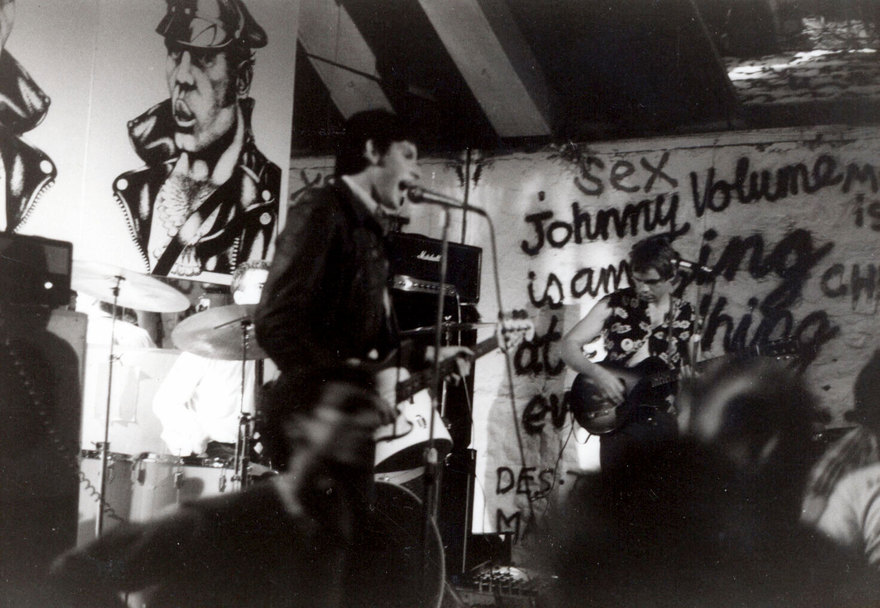
The Scavengers at Zwines, 1978. - Photo by Murray Cammick
Grigg now believes the venue’s reputation is bigger than the reality: “It was really busy some nights and it was very quiet other nights. It really came down to which bands were playing. The Scavengers were resident for a long time, and they always used to pull a reasonable crowd. But that was only on Friday and Saturday night, whereas you could turn up there on a Thursday or Wednesday and there’d be nobody there at all. Then when the Scavengers left in October 1978, The Terrorways took over and you had visits from bands like The Enemy.
“The punk thing blew up over that same time. Zwines became a home for these kids who all turned up from the North Shore and West Auckland. They’d come along for a look then get their hair cut the week after, and they would become punks. By the end of 1978, you had people turning up who’d never heard of the Scavengers or the Suburban Reptiles. There was always a mix of people – office workers coming to have a look or hippies or just ordinary people who decided to come along because it was getting a bit of coverage in the media. So, the crowds came in and the boot boys also turned up, which was when it started to get a little bit heavy.”
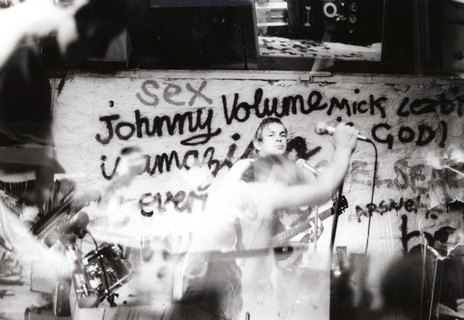
Zwines, 1978. - Photo by Murray Cammick
Grigg believes that many of the stories about Zwines have become 70% mythology and 30% truth. Even the confrontations between the crowds from Babes and Zwines may be exaggerated:
“There was a little war going on between the boot boys and the King Cobras but most people walked past reasonably safely, unless they were wearing something desirable like a leather jacket. A couple of times we went into Babes to listen to the music. I went with Kerry Buchanan because even though he was the drummer with Rooter/Terrorways, his true love was things like Parliament, James Brown, and Average White Band. So it wasn’t quite as cut and dried as we’ve been made out to be.”
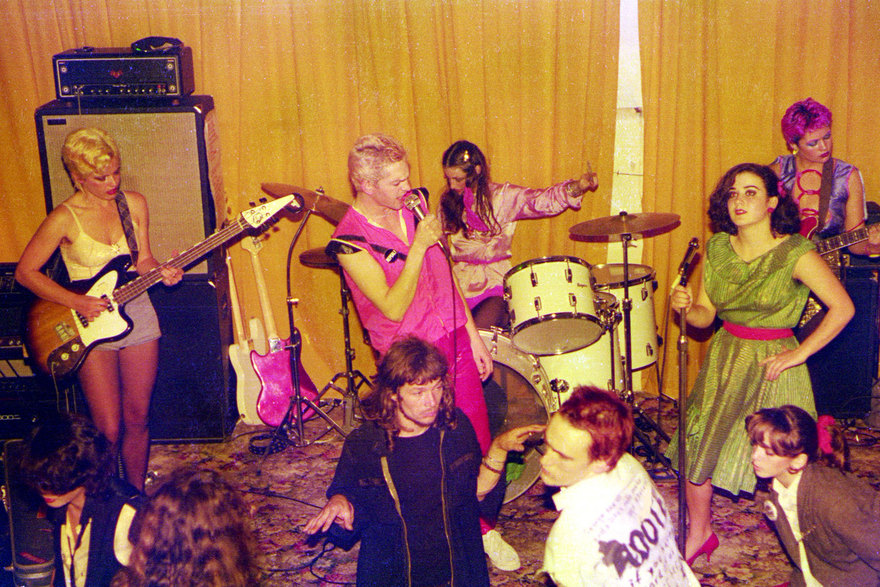
The Idle Idols at Zwines. - Photo by Fiona Clark
The scene at Zwines was documented by photographer Fiona Clark, whose images appear elsewhere on AudioCulture, including a whole series of the all-female group, The Idle Idols.
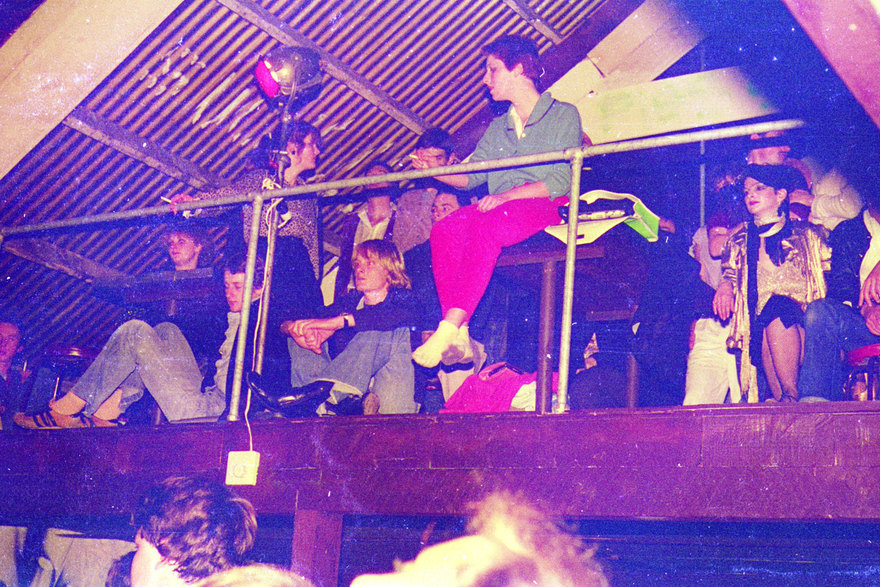
Upstairs at Zwines. Amongst the crowd is Linda Niccol (hand on rail, now a writer on the Kapiti Coast), and Jewel Sanyo (sitting on right, a Rip It Up writer and later a magazine editor in Sydney). - Photo by Fiona Clark
Zwines was taken over by Brian Ball but the scene slowly faded in importance. Along with Babes Disco, it was brought to a final end when the interior was gutted by fire (Grigg says the circumstances “remain murky, although convictions followed”).

Looking down on Zwines, year unknown.
Ten years passed and the 80s construction boom generated plans to demolish many of the buildings in this area. However, the Bluestone Store was listed on the register by what was then known as the “Historic Places Trust” as a Category 1 Historic Place in July 1987. On 27 August 1987, the government put out a press release which ensured its survival:
“The Minister of Conservation Helen Clark has approved the issuing of a protection notice on the Bluestone Store, Durham Lane … The building is part of an important historic precinct which includes Brown’s Mill, His Majesty’s Arcade and the Broadcasting Corporation building.”
However other buildings identified weren’t so lucky. Protestors tried to save His Majesty’s Theatre, but developers arranged for it to be pulled down during the Christmas/New Year break in 1987 to ensure there would be no opposition.
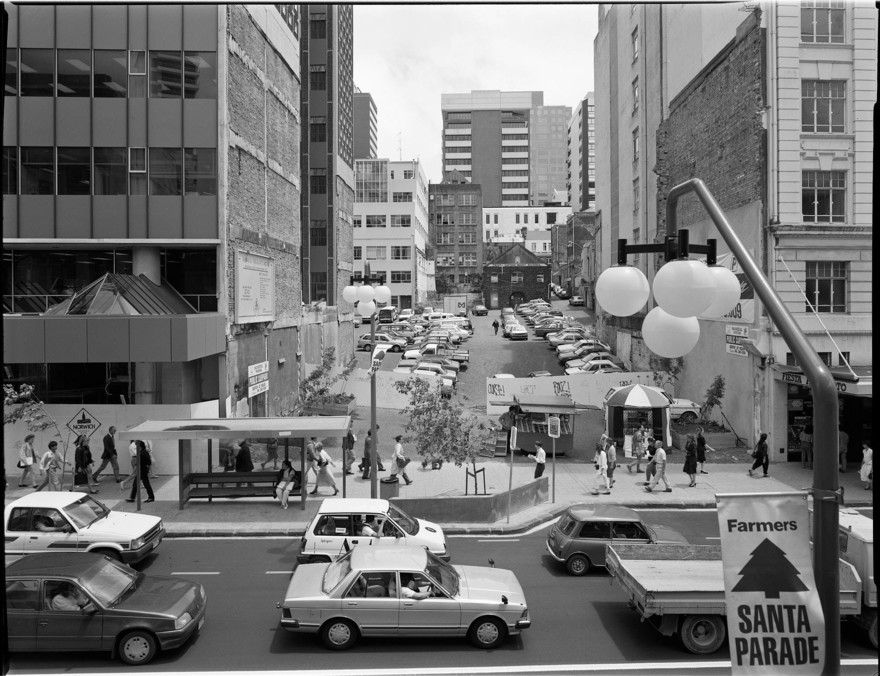
The Bluestone Store can be seen on Durham Lane in the centre background of this 1989 photo, through the gap on Queen Street caused by the controversial demoliton His Majesty's Theatre. - Paul McCredie, Auckland Libraries Heritage Collections 273-MCC062
Bev Parslow, the Northern Area Manager of Heritage New Zealand Pouhere Taonga, says that the Bluestone Room is now the sole survivor from what had been a busy cultural hub on Durham Lane.
“Brown’s Mill was used by the community for alternative markets in the 70s and 80s. A lot of old buildings were being reused just by the very nature of being large buildings, which were made of sturdy materials, and able to be rented cheaply. As in the case of the Bluestone Room, Brown’s Mill was off the main drag of Queen Street but it was still in the CBD. Durham Lane just wasn’t the most desirable area. Broadcasting House was quite amazing, not just its Deco design, but because that’s where a lot of entertainment was recorded for the radio and – before TV – everyone would huddle around their radios to listen. Musicians would perform live there. But His Majesty’s Theatre, Brown’s Mill, and Broadcasting House all went roughly at the same time. I think there was just a feeling that enough was enough, so it was essential to keep the unique Bluestone Store.”

Sheerlux performing at Zwines. L to R: Roland Killeen (later a producer and engineer at Mandrill Studios), Marlon Hart (formely Mal Icious in The Scavengers), Graeme Schnell, and Jimmy Juricevich (later of Techtones). - Photo by Fiona Clark
Swanson Trustees Ltd took over the Bluestone Store in 2000 and worked with property developer and restaurateur Rolly Doyle to bring it back to life, which required a $3 million dollar investment so that it met building standards and had a suitable fit-out. It reopened as the bar, Bluestone Room, with its upstairs area hired out for corporate functions. The venture thrived for the following two decades and Zwines reunions were held upstairs under the name “Punk It Up”.
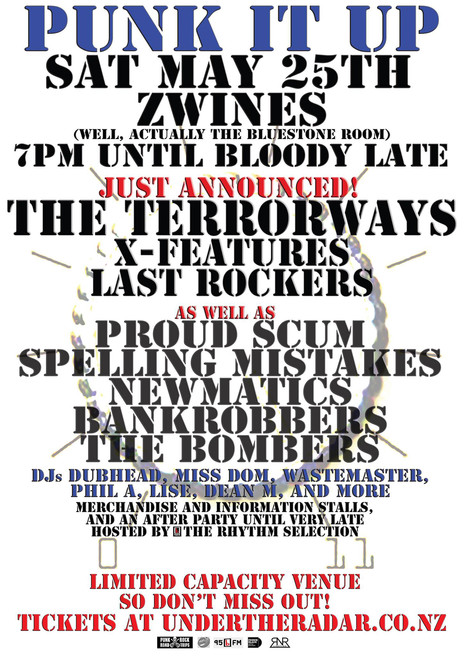
Punk It Up, Zwines / Bluestone Room, 2019.
However, the disruption caused by the construction of the Central Rail Loop nearby and the loss of revenue due to the Covid years meant that the bar was forced to shut once more. In 2023 it is empty with a “For Lease” sign hanging over the front door.
Read more: Granny’s and Granpa’s
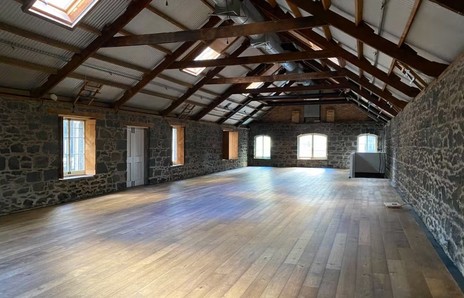
The upstairs interior of the Bluestone Store, 2023. - realestate.co.nz